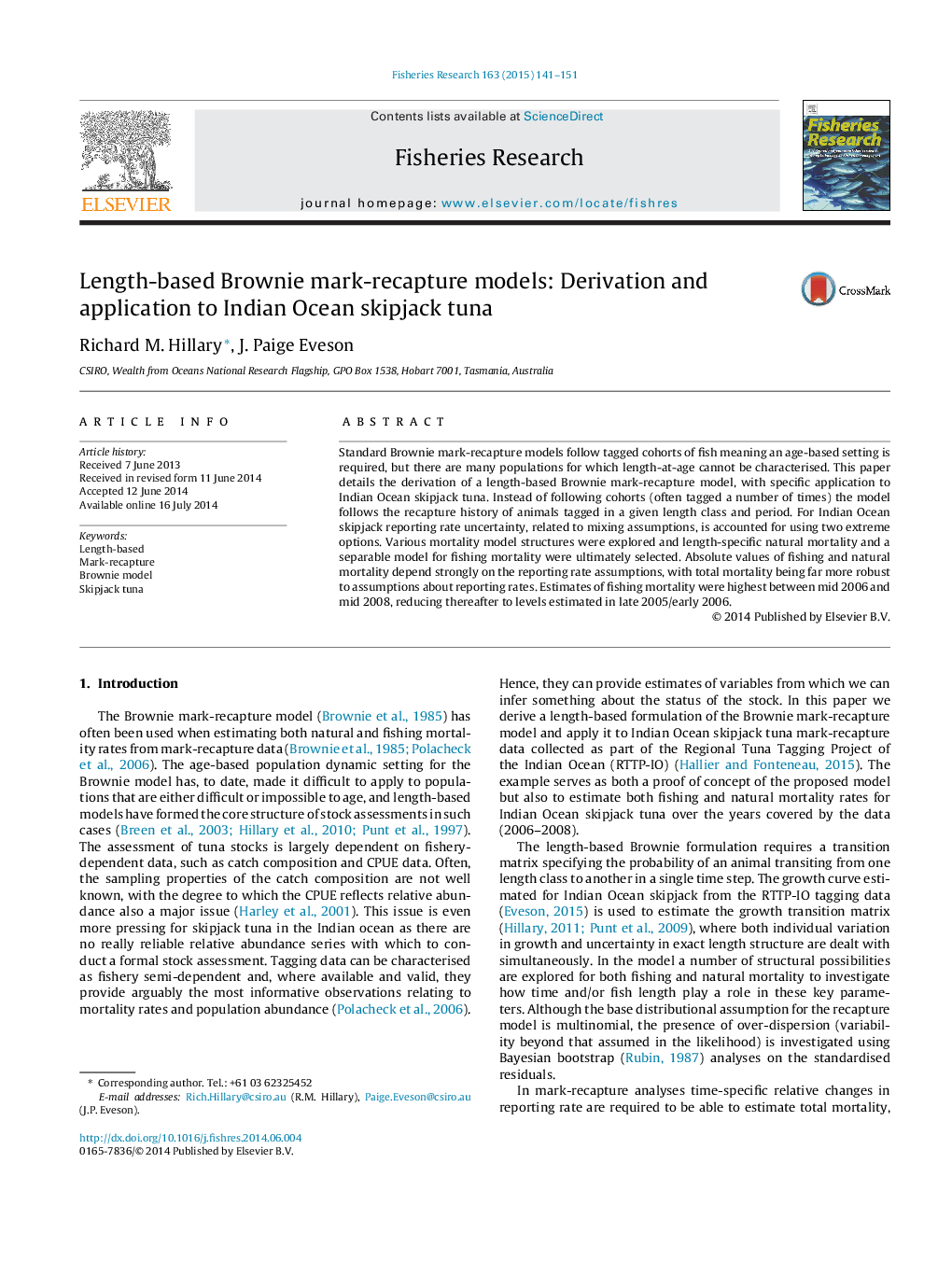| Article ID | Journal | Published Year | Pages | File Type |
|---|---|---|---|---|
| 4542936 | Fisheries Research | 2015 | 11 Pages |
Standard Brownie mark-recapture models follow tagged cohorts of fish meaning an age-based setting is required, but there are many populations for which length-at-age cannot be characterised. This paper details the derivation of a length-based Brownie mark-recapture model, with specific application to Indian Ocean skipjack tuna. Instead of following cohorts (often tagged a number of times) the model follows the recapture history of animals tagged in a given length class and period. For Indian Ocean skipjack reporting rate uncertainty, related to mixing assumptions, is accounted for using two extreme options. Various mortality model structures were explored and length-specific natural mortality and a separable model for fishing mortality were ultimately selected. Absolute values of fishing and natural mortality depend strongly on the reporting rate assumptions, with total mortality being far more robust to assumptions about reporting rates. Estimates of fishing mortality were highest between mid 2006 and mid 2008, reducing thereafter to levels estimated in late 2005/early 2006.
